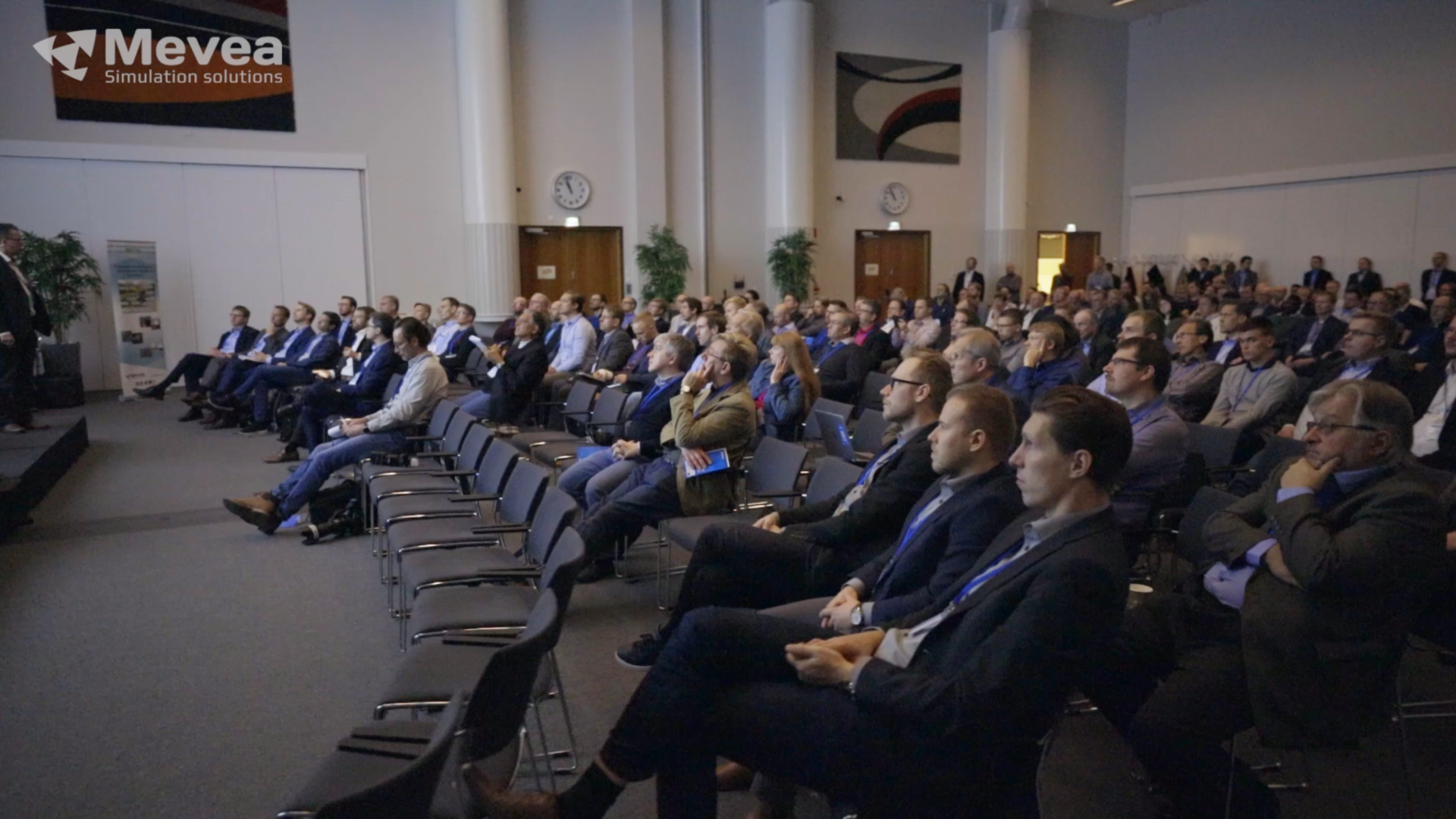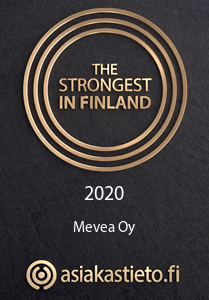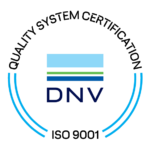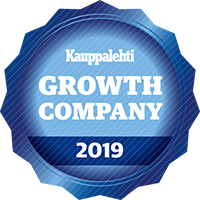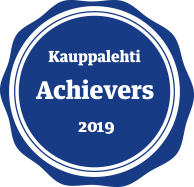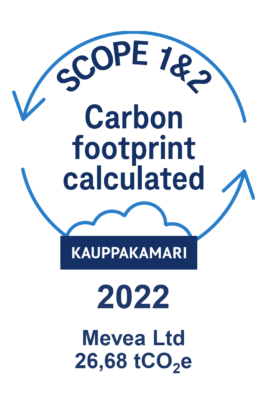- How are companies implementing Digital Twins in practice?
- What are the business benefits of Digital Twin technology across the product lifecycle?
- Why is Digital Twin technology important to drive innovation?
These are the questions we set out to answer when we started to organize the 6th annual Mevea Seminar. With the power of more than 250 participants, 12 insightful presentations, and an entire hall filled with hands-on demos we stepped into the world of Digital Twins to learn and showcase how they are being implemented in practice today.
The Importance of Digital Twins in developing intelligent machines
The day started by setting the big picture around the Digital Twin concept; why Digital Twins are necessary in the development of intelligent and autonomous machinery. With increased machine intelligence, product development is also getting more complex with a larger share of lead times spent on software development and implementation. At the same time, increased global competition and a demand for higher productivity mean that developing the next generation of smart, connected machines has to be done faster and with fewer resources.
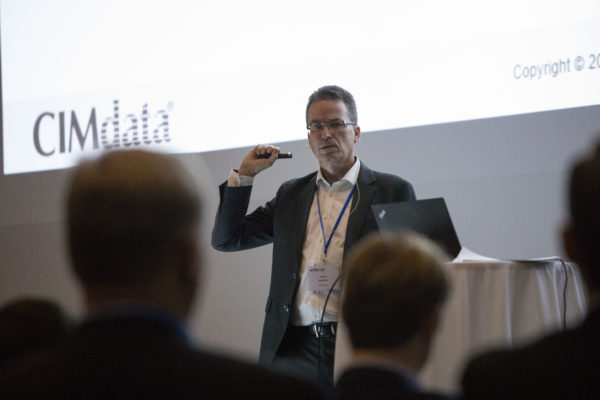
Frank Popielas, Executive Consultant for CIMdata, says that one solution for complexity in the development process could be “Innovating at the Speed of Thought”, and this is where the Digital Twin can make a world of difference. Instead of focusing on one individual part of the product development process, companies can employ a Model-Based Systems Engineering (MBSE) approach to their product lifecycles and initiate an interdisciplinary way of operating to achieve sustainable innovation. By embracing a Digital Twin-centric product development process, engineers from different disciplines such as Mechanics, Electronics and System Integration can simultaneously work on the same model in an agile way.
According to Popielas, the key to a successful Digital Twin-project is to start with the areas that you’re comfortable with, keep it simple, and make it a part of your corporate vision and strategy. This is the only way to ensure the successful deployment of Digital Twin capabilities within your organization in order to achieve efficiencies and accelerate innovation.
Implementing Digital Twins in practice through the product lifecycle
The focus of this year’s Mevea Seminar was on the practical implementations of Digital Twin technology that are being used by companies today. Rather than us telling these stories ourselves we were joined by some of the most innovative heavy machinery manufacturers such as JCB, Junttan, Liebherr, Normet, Rocla, and Sleipner as well as thought leaders from the University of Loughborough and VTT Technical Research Centre of Finland presenting their experiences with implementing Digital Twins across the product lifecycle.
Training
One of the better-known use-cases of a Digital Twin, in combination with simulator hardware, is operator training. There are two major differentiators between “traditional” and Digital Twin -based simulator training:
- Connection to the real-life control system software and hardware
- Accuracy of physics-based machine, environment and work process simulation
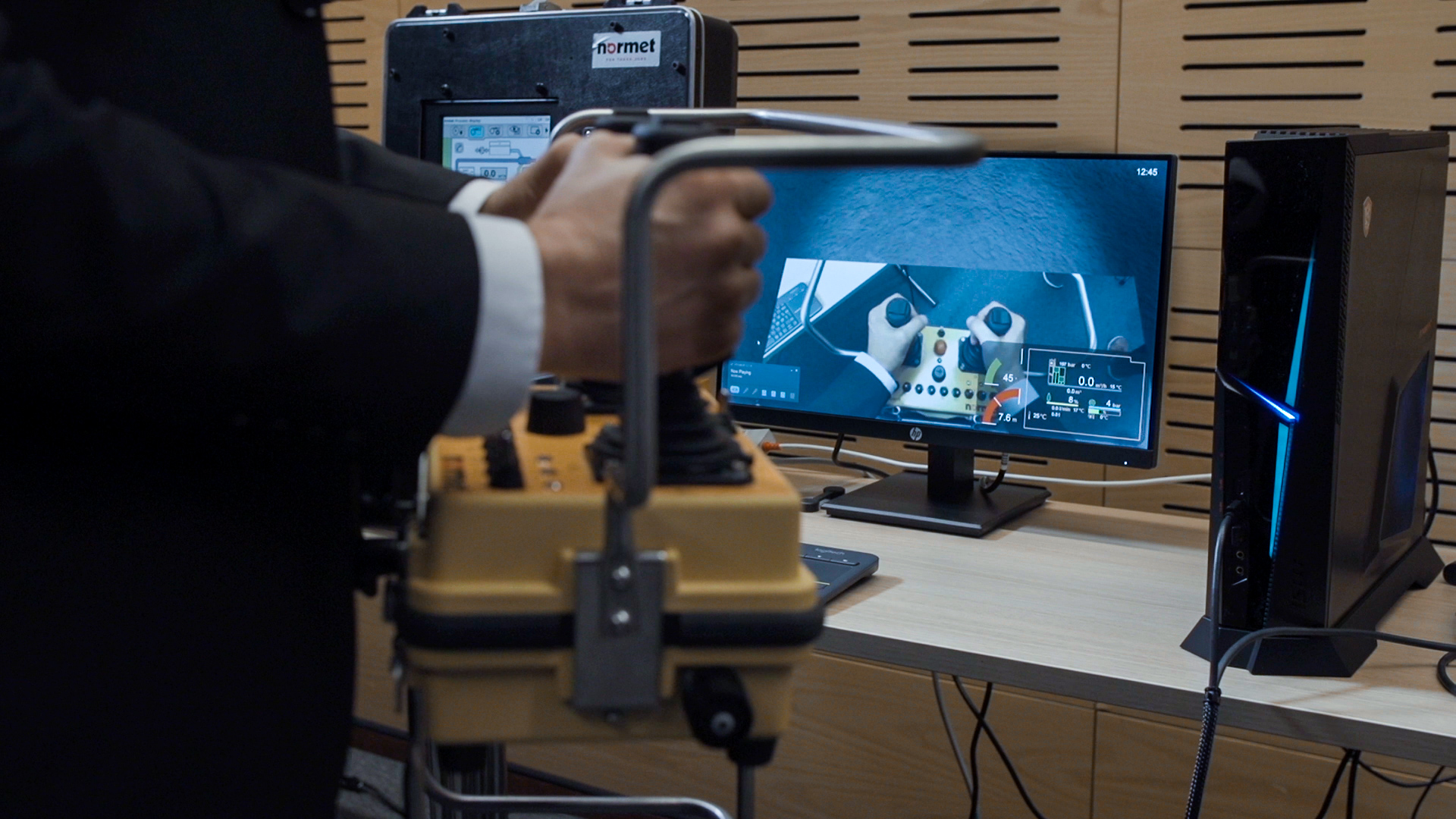
The integration of the control system allows operators to train with the exact physical controls that are being used in the real machine as well as familiarize themselves with advanced operator assistance functionality. Kalle Määttä from Normet explained that even highly skilled operators can benefit from Digital Twin -based training in terms of improving productivity and reducing downtime of their SmartSpray concrete spraying systems in the field. Reducing production downtime is also the most important business driver for Sleipner in offering simulator training to their customers, who could be losing thousands of euros for every hour spent training on a real mining excavator.
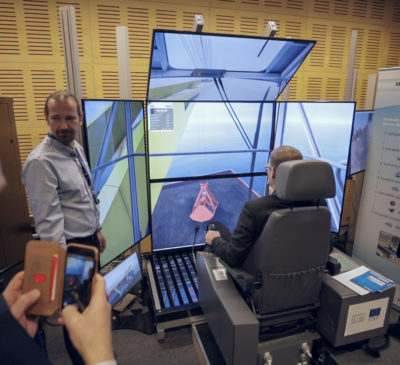
Another advantage of connecting simulators to real-life control software and UI is an increase in skills transfer. Christian Schneider introduced the audience to how Liebherr has been able to train their crane operators in a realistically simulated virtual machine with an integrated actual control system. Liebherr’s connected LiDAT telematics solution and smartApp offer vital feedback on trainee performance that can be compared to real-life crane operators. By combining the Digital Twin with telematics data, Liebherr can efficiently train its operators to safely and productively perform their work cycles on Liebherr maritime cranes.
Product development
Digital Twins’ capabilities are not limited to operator training only. Concept design and product development processes can benefit significantly from the introduction of Digital Twins. The challenges in the early stages of the product lifecycle are manifold. Whether it’s the development of a completely new user interface (UI) and control system as in the case of Junttan, virtual concept development and validation as Rocla explained, or integrating functionalities of several development software packages through a common interface like in the case of JCB, the Digital Twin approach can help decrease lead times and significantly boost innovation.
Overcoming great challenges often yields great results:
Through hard work and dedication, Junttan has been able to save more than a year of product lead time by being able to test its new control system virtually before the actual machine was even built. The Digital Twin that was initially built for UI testing also enabled operator training, software testing and demonstrating the new UI design using mixed reality (MR) visualization.
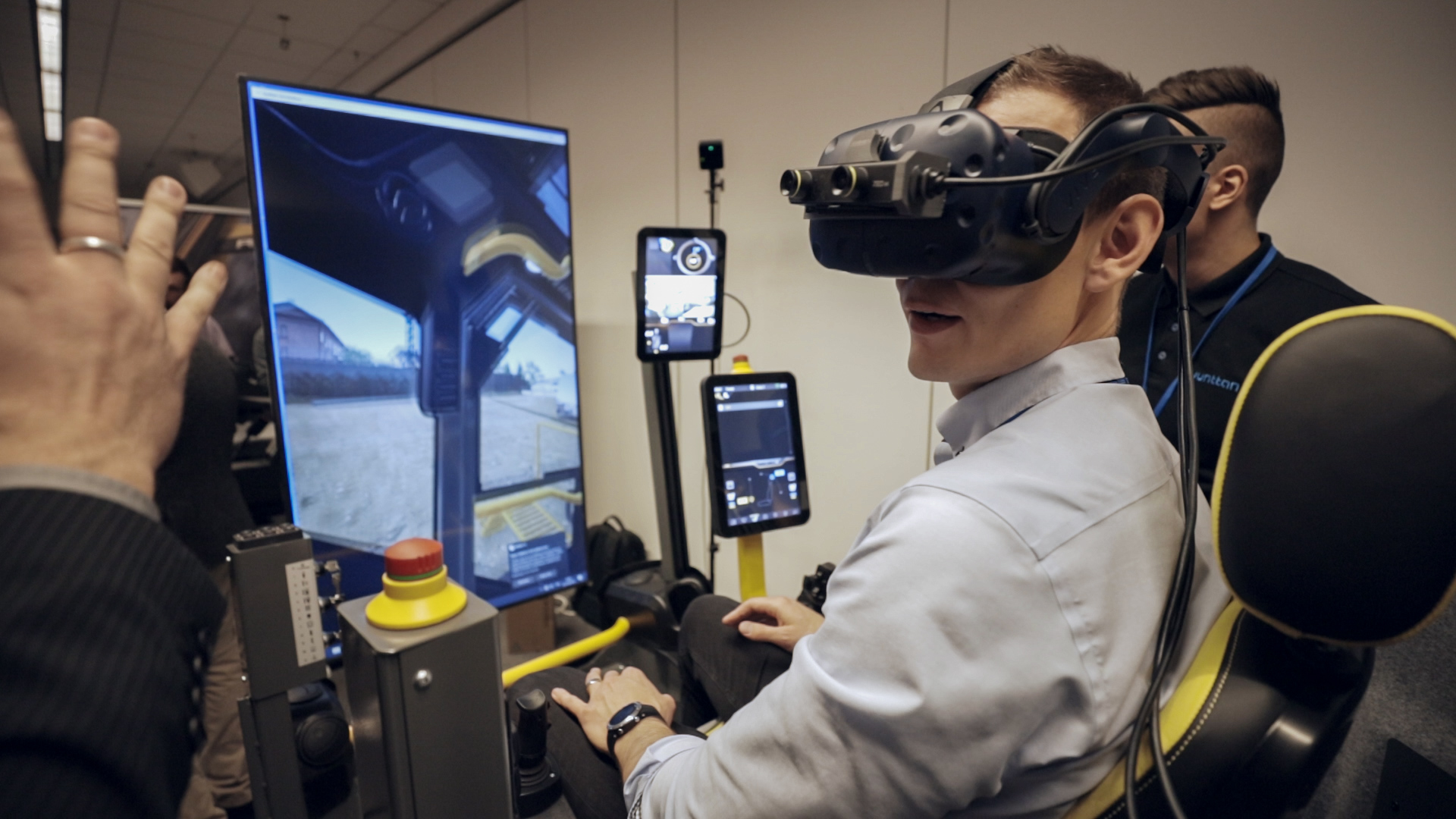
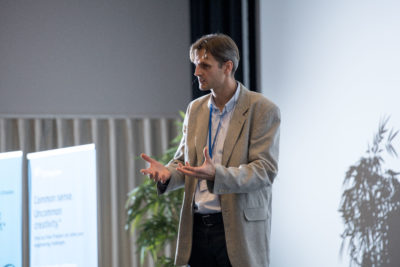
A Digital Twin-centric product design process has enabled Rocla a completely virtualized concept, development and prototyping process, saving time and money. Key to this is the fact Rocla’s forklift Digital Twin accurately matches its physical counterpart, not just cosmetically but also in performance and key characteristics.
Finally, JCB explained how they are now capable of performing more extensive studies on their machinery by combining the forces of two complementary software packages that ultimately help them increase machine efficiency and productivity.
Digital Twins in research and academia
To gain a better understanding of which future developments will influence the use of Digital Twins, we invited speakers from the University of Loughborough and VTT Technical Research Centre of Finland to give us an idea of how the Digital Twin drive innovation within the scientific community.
PhD researchers Jake Rankin and Callum Newman from the University of Loughborough discussed the role of Digital Twins in reinforcement learning and machine vision, both crucial disciplines to achieving vehicle autonomy. In his presentation, Rankin explained in more detail how algorithms and their reward designs can be developed with the help of Digital Twin. In a similar fashion, Newman presented a case for utilizing Digital Twin technology to generate simulated datasets that enable the training of object detection networks for artificial intelligence.
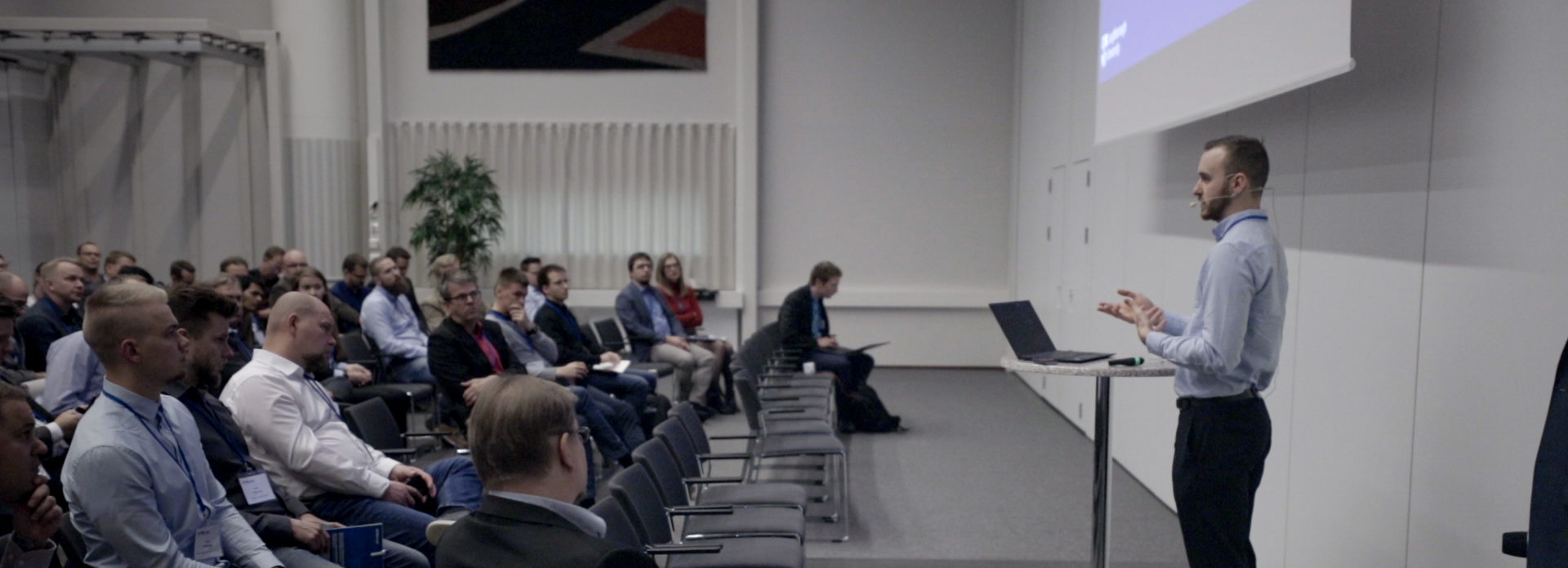
When predictive maintenance is done properly, efficiencies can be gained and in the most advanced cases, even lives can be saved. The latter holds true especially in the case of fighter jets, which was the topic of Aslak Siljander’s presentation. VTT Technical Research Centre of Finland works in a variety of industries, aerospace and defense being one of them. Together with the Finnish Defense Forces VTT developed the HOLM (Hornet Operational Loads Measurement) System to analyze fatigue and damage caused to F-18 jets during flight. With the collected data, they were able to run simulations and improve their lifetime predictions for the jets as well as develop the best practices for pilots in order to prolong the fleet’s lifetime. The simulation provides valuable information which can lead to breakthrough insights in the field of predictive maintenance and lifetime prediction.
Conclusions
At the end of the day we concluded, that Digital Twins can provide a solution to many challenges companies are facing throughout their product lifecycles. The beauty of having a single physics-based virtual representation of your asset is that it is easy to involve all stakeholders from a variety of development stages both internally and externally. This applies similarly to concept design, product development, or operator training. The key to start the implementation of these practices in your business is integrating them as a part of your corporate digital strategy. Only then you can also start realizing the benefits of Digital Twins many companies are experiencing already today.
